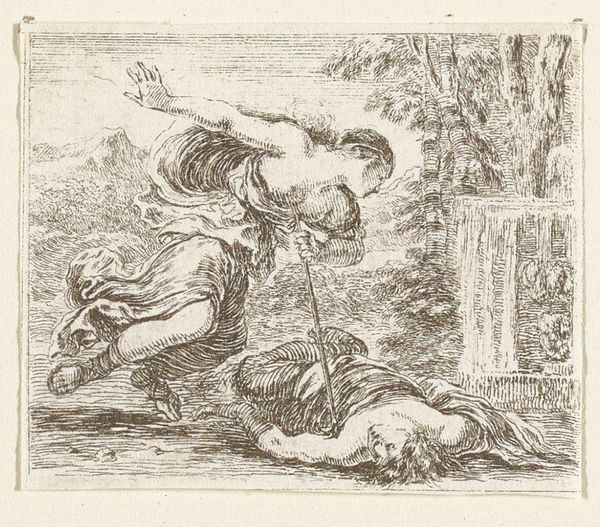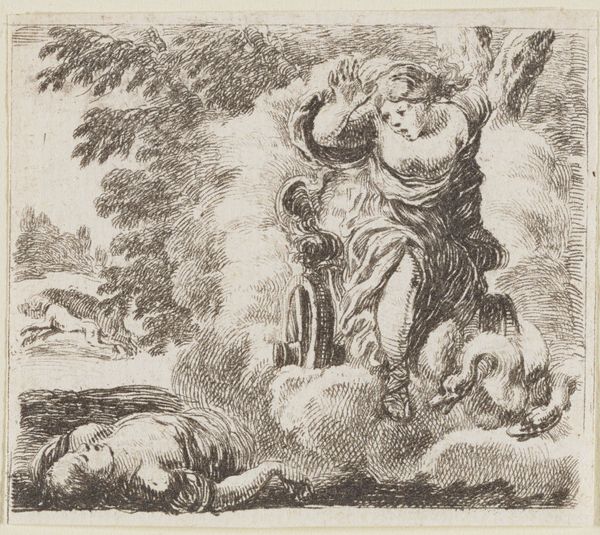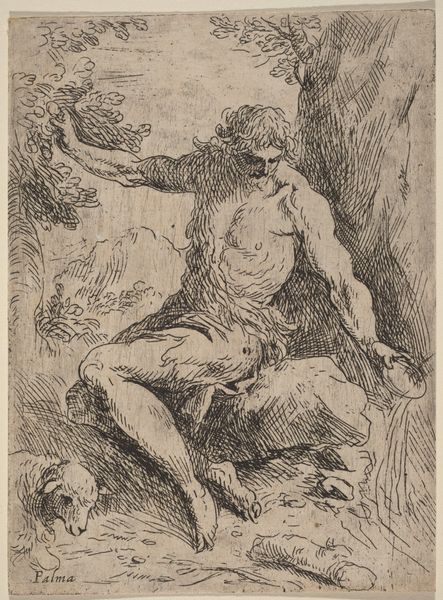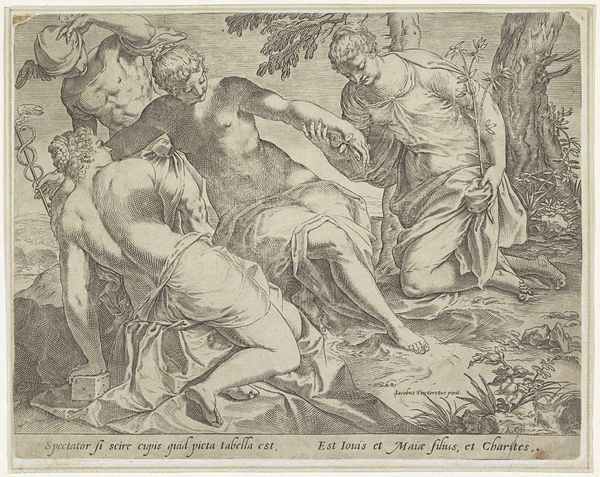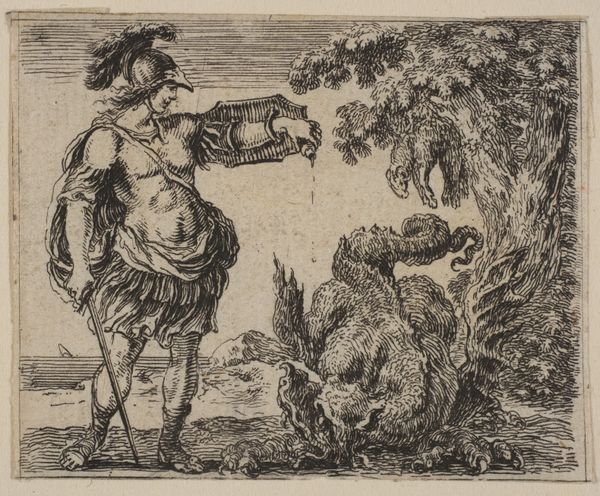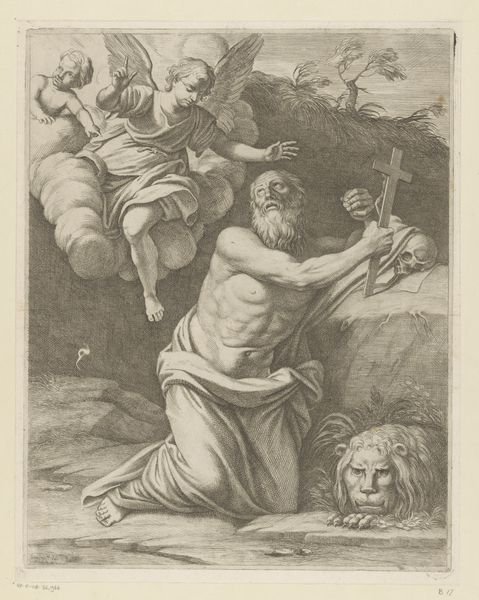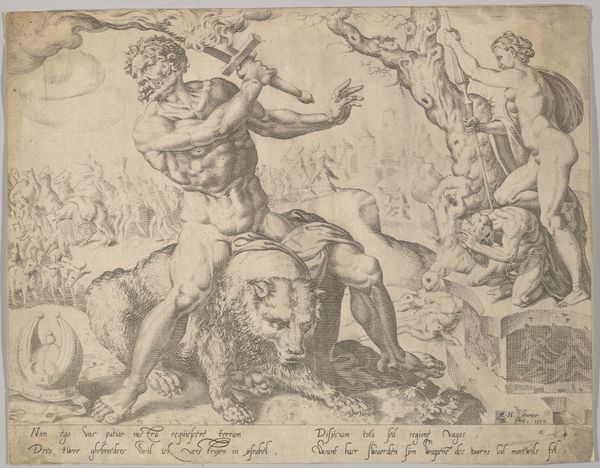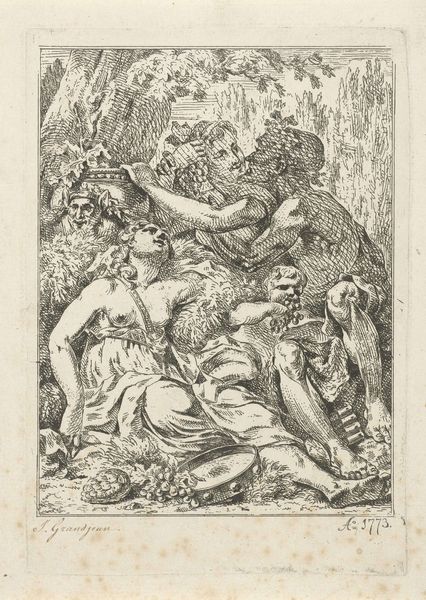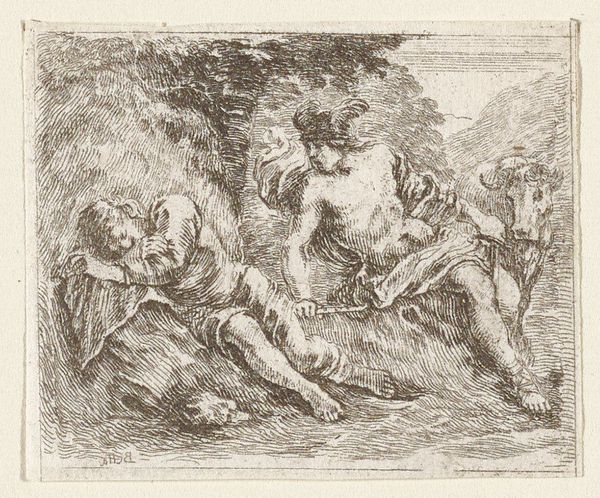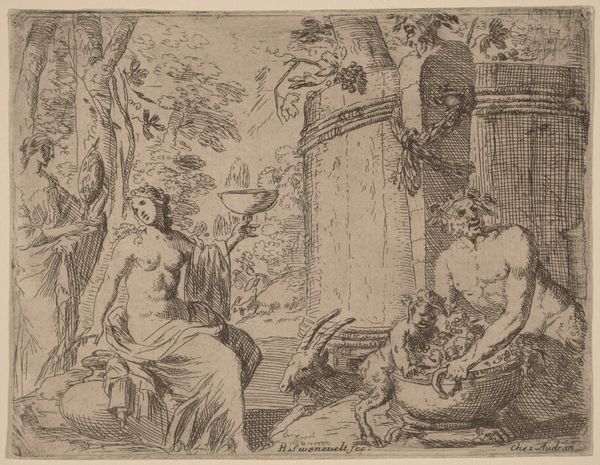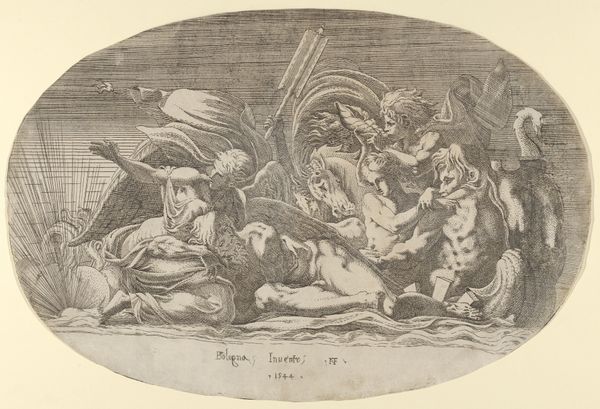
Pyramus et Thisbe, from 'Game of Mythology' (Jeu de la Mythologie) 1644
0:00
0:00
drawing, print, etching, engraving
#
tree
#
drawing
#
ink drawing
# print
#
pen sketch
#
etching
#
pencil sketch
#
landscape
#
men
#
history-painting
#
engraving
Dimensions: Sheet: 1 7/8 × 2 3/16 in. (4.7 × 5.6 cm)
Copyright: Public Domain
Curator: This dramatic image is titled *Pyramus et Thisbe* from the series *Game of Mythology*, etched by Stefano della Bella in 1644. What strikes you most about this particular rendition? Editor: It's frantic. The figures are rendered with such dynamic energy; it feels almost chaotic. There’s a raw emotionality here that jumps right out. Curator: Della Bella has distilled Ovid’s tragic tale into a single, explosive moment. Thisbe stumbles upon Pyramus, who, believing her dead, has taken his own life. Her flowing garments and outstretched arms contribute to the overall sense of distress. The symbolic weight of the scene hinges, in my opinion, on that fallen sword. Editor: Absolutely. The sword acts as a potent emblem of both action and consequence. It visually links Pyramus’s death with Thisbe’s inevitable demise. I am intrigued by how the artist uses this emblem as a bridge between cultures through time. Do you believe this visual depiction helps shape the understanding of death itself? Curator: Perhaps not the understanding of death itself, but rather, it informs how subsequent generations perceive and represent these timeless stories. Note how della Bella chose to highlight a pivotal element from the primary texts; that the couple coordinates a covert meeting spot near a mulberry tree to solidify their union. The color of the berries shifts to crimson from white—illustrating passion that transforms into loss and remembrance. Editor: Indeed. We can view this tragic mythology through the lens of societal attitudes towards love and sacrifice during della Bella's time. The original mythology was Greek, retold in Latin, illustrated during the baroque era, then made available to us today via this piece hosted at the Metropolitan Museum of Art in New York City! It serves as an intersection for societal stories through centuries and space. It’s the accessibility of this narrative, replicated on playing cards no less, that exposes an underlying societal need to contemplate, if not venerate, great tales of love gone awry. Curator: Exactly, these “Games of Mythology” weren’t just decorative frippery, they circulated stories, shaping cultural understanding. They offer tangible insight into both the cultural appetite and contemporary social interpretations of ancient tales. Editor: So true. It's a potent reminder that artworks are not static entities but active participants in shaping our understanding of the world. Curator: A rather bleak world if you ask me! A beautiful reminder though. Thank you for your reflections!
Comments
No comments
Be the first to comment and join the conversation on the ultimate creative platform.
